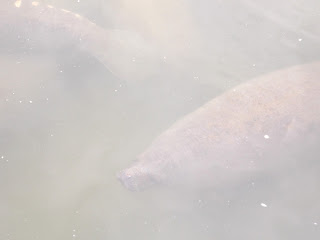Currently, outside and inside the museum, there is the work of one of the world's foremost living sculptors- Jaume Plensa. This special exhibit of the artist is titled Human Landscape. The artist has created all over the globe large-scale artwork related to the human figure. Several of his art pieces can be found outside of the museum. Pictured below is his Heart of Trees. Each of the seven bronze figures is a self portrait. Arms and legs are wrapped around living trees which pay homage to such great composers of the 19th and 20th century as Gershwin, Bizet Wagner and others. Their names are inscribed on the shirts of the figures.
Music profoundly affects Plensa's artwork, as seen in another one of his sculptures in the exhibit which is a human head with musical notes on it. He also liked poetry as a sensory experience, as seen in his hanging display of letters called Silent Rain. Those letters form words which compose lines of poetry taken from 8 poems written by different authors. It is one piece of artwork which can be touched and felt!
The above artwork is titled Simply Beautiful. It was done by Cuban artist Mabel Pujols. She made a state-sponsored visit to a women's prison in Holguin,Cuba where the inmates make plastic flowers from recycled materials. She placed those flowers on bicycle spokes, which are activated to move around a portrait of a lady by a motion sensor. According to museum information, it creates an on-going formation and deformation of the face. The artwork explores "the expression of the material and spiritual freedom that the search (for) beauty can provide".
The Classical World is the only complete exhibit currently left on display in the museum. It is artwork produced in ancient Greece and Italy as well as North Africa and the Near East. Fish carved on a piece of terracotta pottery, as well as the Christogram on the oil lamp fragment pictured above, caught my eye. I had learned in church history classes about how the early Christians had used those symbols to identify themselves as followers of Christ. To actually see those symbols on the ancient pottery was quite impressive for me!





































